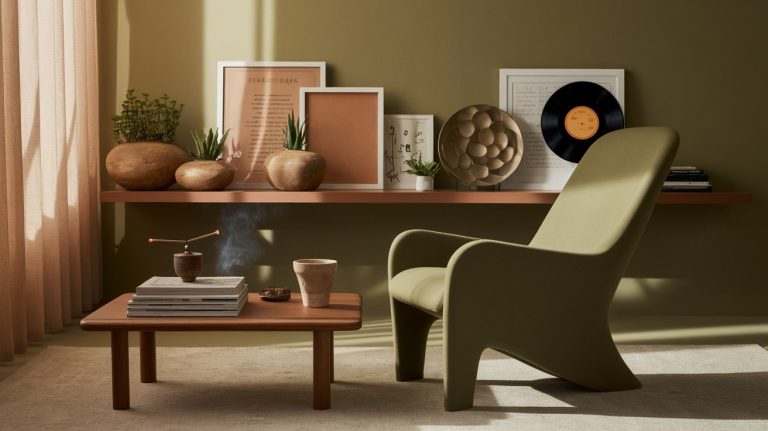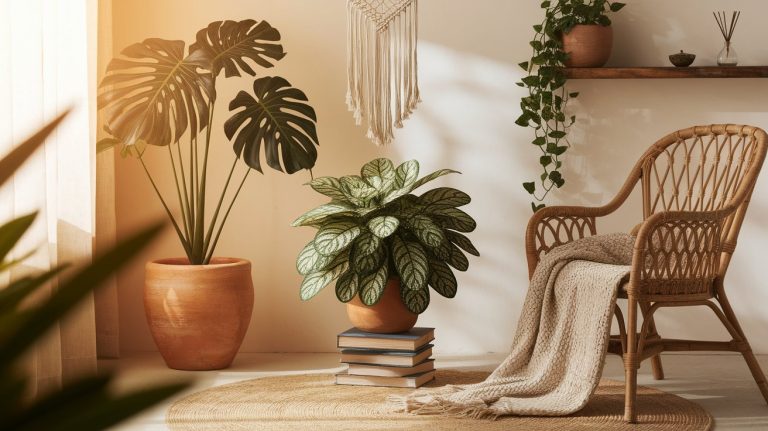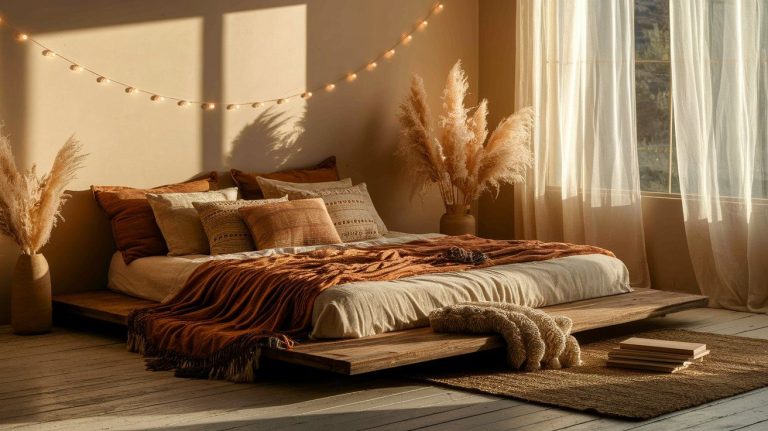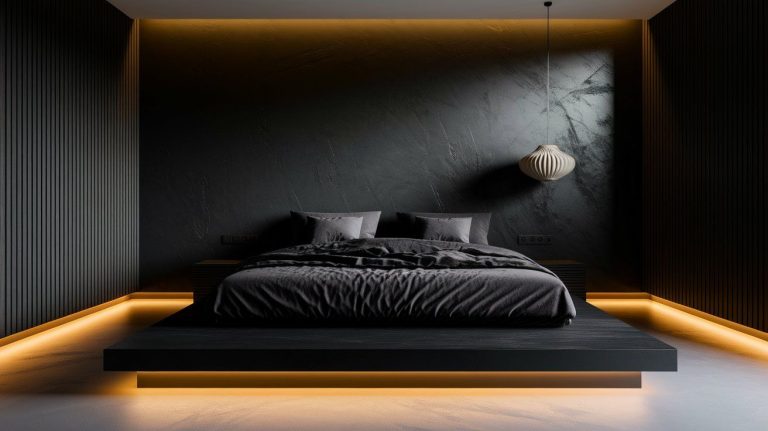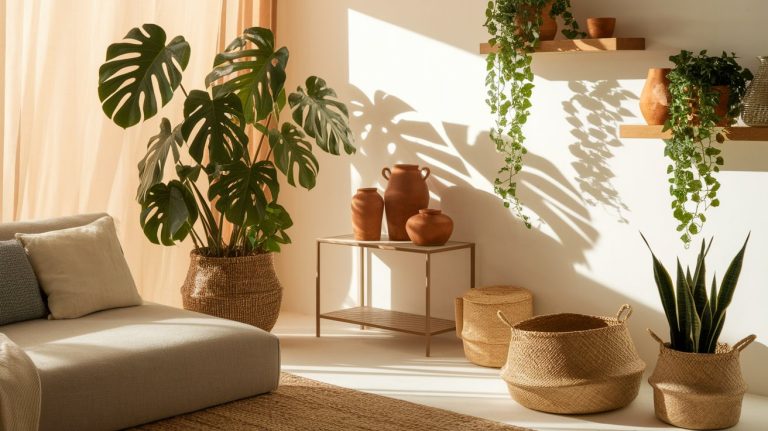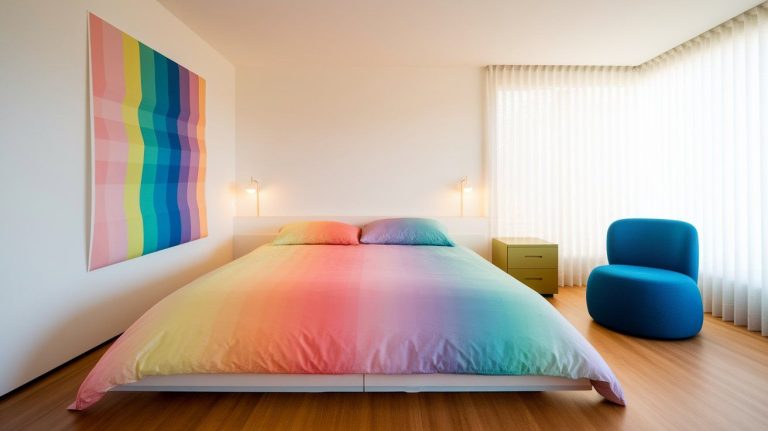13 Space Styling Secrets Interior Designers Swear By
Interior designers don’t just “decorate.” They curate, which means every object, every shadow, every whisper of color is chosen with purpose.
When you’re curating space inspo, you’re not just collecting ideas. You’re crafting an environment that tells a story, yours. It’s texture meeting tone.
This guide breaks down 13 styling secrets that interior designers swear by. Not because they’re trendy. But because they make a space truly unforgettable.
1. Think Like a Director, Not a Decorator
Interior stylists don’t just place objects. They set the tone, frame emotion, and guide the room’s energy, exactly like a film director composing a scene.
What It Means
Instead of treating your space like a checklist of decor items, approach it as a visual story. Ask:
- What is the emotional tone of this room?
- Where should the eye land first?
- What objects set the “scene” even when no one is around?
Try This: Director-Level Styling Tips
1. Pick a central shot. This could be a sculptural chair under a reading lamp, or a framed print positioned in negative space. Let it function as your “hero image.”
2. Edit for mood. Soften harsh lighting. Rearrange furniture for better flow. Use natural materials to ground the atmosphere, or metallic accents to sharpen it.
3. Set secondary characters. Support your focal piece with textures and objects that echo the vibe. A worn book, a trailing plant, a thrifted ceramic, these fill the frame with depth and narrative.
Why Designers Swear by This
Interior designers use this mindset to create rooms that feel cinematic, intentional, and emotionally clear. It’s not about having expensive pieces. It’s about directing attention, mood, and memory with what you have.
2. The Rule of One Obsession
Interior designers often anchor an entire room around one visual or emotional obsession. That one detail you’re drawn to without fail, the thing you save over and over again. That’s your signal. And it can become your space’s secret sauce.
What It Means
The Rule of One Obsession is about owning a single repeated visual theme, object, or color that gives the space identity and cohesion. It works across styles, minimalist or maximalist, because it builds personality through intentional repetition.
Identify Your “Obsession”
Ask yourself:
- What colors, materials, or moods are you constantly saving on Pinterest or IG?
- Is there a visual you always come back to, like worn leather, vintage cameras, or moody greens?
- What’s the one object in your current space that feels most like you?
Once identified, let that obsession quietly echo throughout the space.
How to Curate Around It
| Step | What to Do | Why It Works |
|---|---|---|
| 1. Choose your focal “obsession” | It could be a color (like ochre), a material (like rattan), or a motif (like arches) | Anchors your aesthetic direction |
| 2. Repeat subtly across zones | Use variations of the obsession in art, textiles, or shapes | Builds unity without feeling themed |
| 3. Let it drive tone and mood | Let this one element inform your textures, lighting, and accent choices | Creates a layered emotional consistency |
Example
A creative obsessed with indigo might use:
- Indigo velvet cushions
- Vintage denim in a framed collage
- Blue-tinted glassware
- Ink-inspired artwork
Each element reinforces the tone without screaming “blue.” That’s curated space inspo at its most personal.
3. Mood First, Moodboard Later
Before you build a moodboard, define the emotional blueprint. Interior designers consistently start with the desired feeling of a room, long before selecting furniture, colors, or layouts. Curating space inspo without first identifying mood is like scoring a film before writing the script.
Why It Matters
Design rooted in mood creates spaces that feel cohesive without relying on trends. A clearly defined atmosphere guides every styling decision and keeps the process grounded in emotion, not impulse.
Start With These Questions
Ask yourself:
- How do I want to feel when I walk into this space? Calm, inspired, energized, secure?
- Who is this room for, and what do they need emotionally? Is it a solo creative space or a shared zone for connection?
- What does this room say at 7 AM? What does it whisper at 10 PM?
These questions shift your approach from visual to visceral. They set the tone for the curation process that follows.
Actionable Styling Prompt
| Mood You Want | Design Moves That Support It |
|---|---|
| Calm | Neutral tones, diffused lighting, soft fabrics |
| Creative | Eclectic textures, stimulating color pops, flexible layouts |
| Grounded | Earth tones, natural materials, stable furniture proportions |
| Romantic | Warm lighting, layered fabrics, nostalgic objects |
Once the emotional tone is clear, you can build a visual direction that supports it,not defines it. This is the foundation of intentional home styling.
4. The 70/30 Rule (But Make It Emotional)
Interior designers rely on visual balance, but the truly memorable spaces strike an emotional one too. The 70/30 rule helps you create harmony while still leaving room for surprise and contrast.
What Is the 70/30 Rule?
This styling principle suggests:
- 70 percent of the space should feel grounded, calming, and cohesive
- 30 percent should break the rules, add tension, or reflect your personality in an unexpected way
Think of it as order and edge working together.
How to Use It When Curating Space Inspo
| Zone | 70% (Foundation) | 30% (Emotional Accent) |
|---|---|---|
| Color | Neutral base tones (beige, warm gray, soft sage) | One pop, terracotta, cobalt, or mustard |
| Texture | Smooth linens, clean surfaces | A shaggy rug, velvet cushion, or rattan chair |
| Furniture | Clean-lined modern pieces | One sculptural or vintage item |
| Styling | Minimal shelf arrangement | One shelf with layered, chaotic storytelling |
Why It Works
If everything in a space screams for attention, nothing stands out. But when most of your space is calm and intentional, the emotional 30 percent lands. It makes a room feel curated, not chaotic.
This is how interior designers bring drama without clutter, and warmth without losing clarity.
5. Float Something Unexpected
One trick interior designers rely on to elevate a space instantly is to float key pieces, meaning, they break the habit of pushing everything against walls. But it doesn’t stop at sofas and chairs. The real magic happens when you float something unexpected.
What “Floating” Really Means
In design terms, “floating” means deliberately positioning an object away from the wall or expected border to give it room to breathe and make it stand out.
Instead of defaulting to symmetry or pushing everything to the perimeter, floating allows an object to become the centerpiece, framing attention and flow.
Unexpected Ways to Float with Style
| Element | Unexpected Float Idea | Why It Works |
|---|---|---|
| Mirror | Hang a large round mirror from the ceiling near a window or mid-room | Reflects light, adds sculptural drama |
| Pendant Lamp | Suspend a pendant light over a corner chair or freestanding table | Creates an intentional vignette or “scene” |
| Open Bookshelf | Place it mid-room as a divider between zones | Adds dimension and zones space without a full wall |
| Accent Chair | Angle it away from the wall with negative space behind | Signals that it’s a destination, not an afterthought |
Why Designers Swear by It
- Enhances flow: Floating creates clear walkways and smoother transitions between zones
- Invites curiosity: When something is placed differently, it draws the eye
- Adds layering: It prevents that flat, all-against-the-wall look common in uninspired layouts
Curating space inspo at this level means treating your layout as a canvas. Floating unexpected pieces turns even a small room into something sculptural, intentional, and emotionally expressive.
6. Style in Layers, Not Lists
Designers don’t decorate in checklists. They style in layers, each one adding mood, texture, and resonance. This approach turns a plain setup into a dimensional experience.
The Four Styling Layers
| Layer | What It Adds | Key Elements to Use |
|---|---|---|
| Base | Function and form | Furniture, layout, color palette |
| Mood | Atmosphere and emotional tone | Lighting, scent, natural materials |
| Texture | Visual rhythm and depth | Fabrics, finishes, surface contrast |
| Story | Personal identity and narrative | Books, art, heirlooms, curated objects |
Think of each layer as a pass through the room. First set your foundation, then build warmth, then personality. Curation happens when you stop filling a room and start layering meaning into it.
7. Let One Object Be Loud
Every memorable space needs a bit of bold. Interior stylists know how to let one object do the talking, while the rest of the room leans back and lets it shine.
The Strategy
- Pick one item with attitude, a bright chair, an abstract light fixture, an oversized art piece.
- Surround it with quieter choices: neutral walls, soft surfaces, minimal clutter.
- Use lighting to underscore its presence and give it room to breathe.
This doesn’t just work for maximalists. Even minimalist spaces benefit from a little disruption. That one loud piece becomes the soul of the room.
8. Design for the Pause, Not the Scroll
A curated space isn’t just made to be photographed. It’s made to be felt. Instead of designing to impress on social media, interior pros design for moments of pause and presence.
Look for These Moments
| Type of Pause | Example Styling Cue |
|---|---|
| Stillness | A bare corner with morning light and one reading chair |
| Memory | A framed photo placed near a familiar scent |
| Curiosity | A shelf styled with obscure books or found objects |
| Warmth | A textured throw draped across a worn armchair |
Curating space inspo means creating places for the eye to rest and the mind to wander. Think less about engagement metrics. Think more about emotional pause points.
9. Use Light Like a Filter
Interior designers don’t treat light as background, they use it like a photographer uses a filter. The right lighting sculpts mood, sharpens focus, and makes every corner feel intentional.
How to Light with Intention
| Lighting Type | What It Does | Where to Use It |
|---|---|---|
| Ambient | General glow that sets the room’s emotional tone | Overhead fixtures, ceiling track lights |
| Task | Focused light for function | Desk lamps, reading nooks, kitchen counters |
| Accent | Creates drama and emphasizes objects | Wall washers, picture lights, LED strips behind shelves |
To curate powerful space inspo, layer these three types in every room. Use warm-tone bulbs (around 2700K) for intimacy, and consider dimmers to adjust vibe throughout the day. The secret? Make the light feel like part of the decor, not just a utility.
10. Negative Space Is a Power Move
Designers know when not to style. That restraint is what makes a curated space feel confident and elevated.
Why Negative Space Matters
- Gives objects room to shine
- Allows the eye to rest between focal points
- Adds contrast and rhythm to a room’s composition
Think of negative space like silence in music, it’s what makes the melody land. When styling your space, leave intentional gaps:
- Empty walls that create visual tension
- A bare tabletop with just one sculptural object
- Floor space around a freestanding chair
Curation thrives when there’s breathing room. Embrace the edit.
11. Curate With All Five Senses
A well-designed space doesn’t just look good. It feels immersive. Interior designers tap into all five senses to build emotional resonance.
Sensory Styling Toolkit
| Sense | Design Element | Example |
|---|---|---|
| Sight | Visual storylines, symmetry, color pacing | Layered shelves, color-blocked books |
| Touch | Texture and contrast | Velvet pillow + linen throw + cool stone tray |
| Scent | Anchors memory and mood | Scented candles, incense, room sprays |
| Sound | Sets energy and pace | Vinyl player, ambient playlist, wind chimes |
| Taste | Hospitality through detail | A carafe of citrus water, displayed treats, styled bar tray |
When curating space inspo, go beyond the visual. What does the space smell like in the evening? What textures invite touch? Those details create a lasting connection.
12. Tell a Story With Your Shelf
Designers treat bookshelves and open surfaces like storytelling tools. These aren’t just places to “put things.” They’re emotional display cases. And when styled with purpose, they become powerful visual narratives.
Turn Your Shelf Into a Story
| Element | What It Adds | Example |
|---|---|---|
| Books | Depth and personality | Group by color, subject, or memory |
| Art and Objects | Visual surprise | Frame a postcard or layer a small sculpture |
| Plants or Botanicals | Life and texture | A hanging vine or dried stems in a glass |
| Emotional Anchors | Memory and meaning | Heirlooms, souvenirs, personal creations |
Arrange with rhythm. Stack and lean. Mix heights and textures. Avoid making it too “perfect.” Instead, make it feel lived-in on purpose. Your shelf should hint at your past, reflect your present, and quietly nod to what’s next.
13. Design for Who You’re Becoming
The best styling advice? Don’t design only for who you are today, design for the version of you that’s unfolding.
Here’s What That Looks Like
- Leave space for evolution. Choose modular pieces, movable lighting, and flexible layouts that adapt as your lifestyle changes.
- Display items that inspire progress. That could be a photo from a solo trip, a blank journal waiting to be filled, or a vision board tucked into your workspace.
- Curate beyond nostalgia. Celebrate what got you here, yes, but let your styling say “I’m still growing.”
Interior designers curate space inspo that reflects not just taste, but aspiration. When you style for the version of yourself you’re becoming, your space becomes both anchor and catalyst.
Wrap-Up: Ready to Style With Soul?
There you have it, 13 secrets interior designers lean on to create rooms that resonate.
From mood-driven storytelling to bold layering, from scent to silence, curating space inspo is never just about the visual. It’s about how a room breathes, holds you, and becomes your daily mirror.
Frequently Asked Questions (FAQ)
1. What does “curating space inspo” actually mean?
It means going beyond decoration. Instead of copying what’s trending, you style with intention, choosing pieces, layouts, and moods that reflect your personal story, energy, and future goals. It’s about creating a space that feels like you, not just a showroom.
2. How do I find my personal “obsession” for a room?
Start with your saves. What color, texture, or object do you screenshot, pin, or come back to again and again? That pattern of attraction often reveals the “anchor” of your personal style. Use it to guide your material, palette, and layout choices.
3. My space is small. Can I still use these tips?
Absolutely. In fact, smaller spaces benefit even more from curation. Floating furniture, controlling lighting, and using negative space can completely shift how open and intentional a compact room feels. It’s less about size, more about clarity.
4. Do I need to follow a specific design style?
Not at all. You don’t need to commit to “minimalist” or “boho” to have great style. The most compelling interiors often blend influences in a way that feels unique. The goal is resonance, not rules.
5. How can I curate with a low budget?
Curation is about editing, not accumulating. Start by removing what doesn’t serve your space. Rearrange what you have. Add low-cost mood shifts like lighting, scent, or fabric. Thrift stores, swaps, and DIY changes hold more power than most new purchases.
6. What’s the biggest mistake people make when styling their homes?
Styling for trends instead of for themselves. When you try to mimic someone else’s space without considering your mood, lifestyle, and emotional tone, it ends up feeling flat. Start inward. That’s what curating space inspo is really about.
Related Articles:

